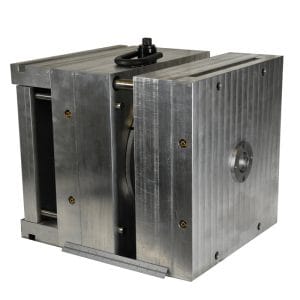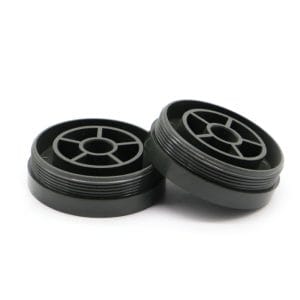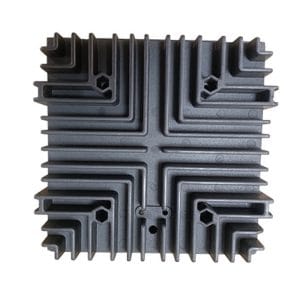What Products Are Made with Injection Molding? – Examples and Applications

Injection molding is a manufacturing process for creating parts and products from thermoplastic and thermosetting plastics. It is widely used across a variety of industries for a range of applications. In this blog post, we will explore what products are made with injection molding and some examples of applications where it is used. We will also touch on the benefits of using injection molding and how it can be used to create parts and products that are strong, durable, and custom-made.
What is Injection Molding?

Injection molding is a manufacturing process for creating parts by injecting molten material into a mold. Injection molding can be used to create a variety of parts and products, including plastic bottles, toys, and automotive components.
Injection molding is a versatile manufacturing process that can be used to create a variety of parts and products. Injection molding is typically used to create parts made from thermoplastic and thermosetting plastics. Injection molding can be used to create parts with complex shapes, and it can be used to create products that are mass-produced.
Types of Injection Molding
Injection molding is a versatile manufacturing process that can be used to create a wide variety of products. The most common type of injection molding is thermoplastic injection molding, which uses melted plastic to create the desired product shape. Other types of injection molding include thermoset injection molding and elastomeric injection molding.
Thermoplastic Injection Molding: Thermoplastic injection molding is the most common type of injection molding. In this process, melted plastic is injected into a mold cavity to create the desired product shape. Thermoplastics are easy to melt and recycle, making them a popular choice for many manufacturers.
Thermoset Injection Molding: Thermoset injection molding is used to create products that require high heat or chemical resistance. In this process, a thermoset resin is injected into a mold cavity and then cured with heat or chemicals. Thermosets are more difficult to recycle than thermoplastics, but they offer superior durability and performance in many applications.
Elastomeric Injection Molding: Elastomeric injection molding is used to create flexible products, such as rubber gaskets and seals. In this process, an elastomeric material is injected into a mold cavity and then cured with heat or chemicals. Elastomeric materials offer excellent flexibility and can withstand extreme temperatures.
Products Made with Injection Molding
Injection molding is a manufacturing process that involves injecting molten material into a mold to produce various parts and products. The most common materials used in injection molding are plastics and metals, but other materials can also be used, such as ceramics.
Injection molding is often used to create small, intricate parts and products, such as medical devices, electronic components, automotive parts, and toys. In some cases, multiple materials may be used in a single injection molded product. For example, a plastic outer shell with a metal inner core can result in a product that is both strong and lightweight.
The advantages of injection molding include the ability to produce complex shapes, the ability to use a variety of materials, high accuracy, and repeatability, and fast production speeds. In addition, injection-molded products can be mass-produced at relatively low costs.
Pros and Cons of Injection Molding
Injection molding is a popular manufacturing process that is used to create various products and parts from thermoplastic and thermosetting plastic materials. Injection molding can be performed with a wide variety of plastics, including acrylonitrile butadiene styrene (ABS), polycarbonate (PC), polyethylene terephthalate (PET), and polypropylene (PP).
There are several advantages to using injection molding, including the ability to produce complex shapes, the ability to combine multiple materials in a single part, and the relatively low cost of tooling. In addition, injection molded parts typically have superior dimensional accuracy and surface finish when compared to parts made with other manufacturing processes.
However, there are also some disadvantages associated with injection molding. One of the primary disadvantages is the high initial investment cost for the necessary equipment. In addition, injection molding generally has longer lead times than other manufacturing processes due to the complexity of the tooling required.
Alternatives to Injection Molding
Injection molding is a manufacturing process that involves injecting melted materials into a mold to create various parts and products. Injection molding is widely used in many different industries, including the automotive, aerospace, medical, and consumer goods industries. However, there are some disadvantages to using injection moldings, such as the high cost of equipment and the reliance on skilled labor. As a result, many companies are looking for alternatives to injection molding.
One alternative to injection molding is 3D printing. With 3D printing, companies can create parts and products without the need for expensive molds or skilled labor. Additionally, 3D printing offers a greater degree of design flexibility than injection molding, allowing companies to quickly create prototypes and test new designs before moving into full-scale production.
Another alternative to injection molding is CNC machining. CNC machines can be used to create parts with very tight tolerances and intricate designs that would be difficult or impossible to produce with injection molding. Additionally, CNC machining does not require the use of molds or other specialized equipment, which can further reduce costs.
Conclusion
Injection molding is a versatile manufacturing process that can be used to create a wide variety of products. In this article, we have provided some examples of products that are made with injection molding and applications where injection molding is commonly used. We hope that this has given you a better understanding of what products are made with injection molding and how the process works. If you are interested in learning more about injection molding or finding out if it is the right manufacturing process for your product, contact us today.



